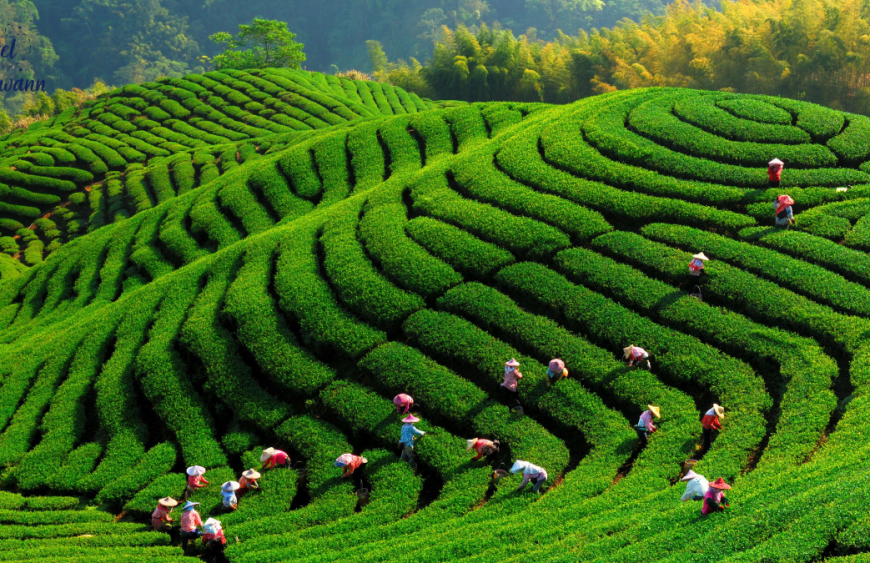From tea garden to tea cup, the birth of quality tea is a long and delicate process. It not only carries the gift of nature, but also contains the heart and wisdom of tea makers. Today, let’s unveil the mystery and explore the secrets that make every cup of tea extraordinary.
I. Unique natural environment
The first element of quality tea lies in its growing environment. China has a rich geographic diversity, different regions due to their unique climate, soil conditions have bred different flavours of tea. For example, the high mountains and cloudy places can often produce high aroma and fresh flavour tea; while the warm and humid south, is more suitable for certain varieties that need specific humidity conditions to thrive.
Light: A suitable amount of sunlight exposure helps the accumulation of tea leaf contents.
Temperature: Suitable temperature difference is conducive to the development of aromatic components in tea leaves.
Moisture: Reasonable and sufficient rainfall ensures that the tea plant has the water it needs for healthy growth.
Soil: Acidic soil rich in organic matter and well-drained is most suitable for tea growing.
Second, careful cultivation and picking
Good tea begins with good raw materials. During the planting process, it is crucial to adopt eco-agricultural techniques to reduce the use of chemical fertilisers and pesticides, and to keep the ecosystem of the tea plantation in balance. The best time to pick tea is when the spring flowers bloom. Hand-picking the young leaves, especially the ‘one heart, two leaves’ or ‘one bud, one leaf’ standard, ensures that the final product is of the highest quality.
III. Combination of traditional techniques and modern technology
From fresh leaves to dry tea, it needs to go through several steps such as killing, kneading (or curling) and fermentation (some types). These processes not only retain the essence of ancient traditional craftsmanship, but also incorporate modern production equipment and technical means, so that each leaf can be handled in the most appropriate way.
Killing: destroys the enzyme activity through high temperature, stops the oxidation process and fixes the colour and aroma of the tea leaves.
Kneading: To make the tea leaves firm and beautiful, and to promote uniform distribution of internal juices.
Fermentation/Oxidation: For black teas and other teas that need to go through this process, proper control can bring richness and layers.
Drying: Removes excess moisture to extend shelf life and further define the aroma.
Fourth, strict screening and packaging
After the completion of the processing of tea leaves also need to go through meticulous grading and selection, to eliminate substandard products, to ensure that every product sold is the best of the best. In addition, the appropriate packaging materials can not only effectively isolate the outside world moisture and odour interference, but also to a certain extent to enhance the overall sense of quality.
V. The Art of Tasting
Last but not least, how to brew and savour a good cup of tea properly is also a learning process. Factors such as water temperature and time will directly affect the expression of the tea broth. Learn to appreciate the beauty of the subtle changes in order to truly appreciate the purity and beauty from the mountains.
From the tea plantation to the tea cup, every step of the process involves countless efforts and wisdom. It is this attitude of striving for perfection that creates an amazing tea.

